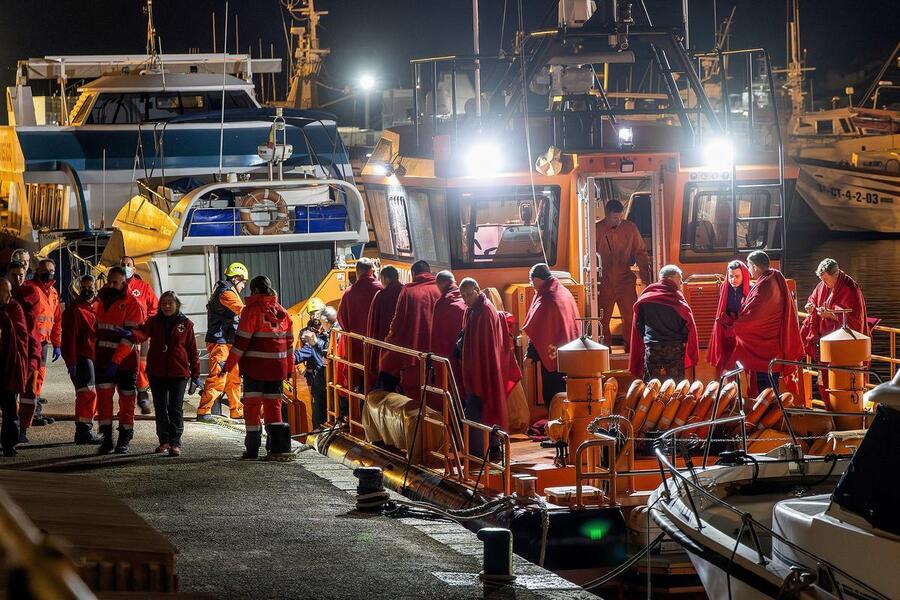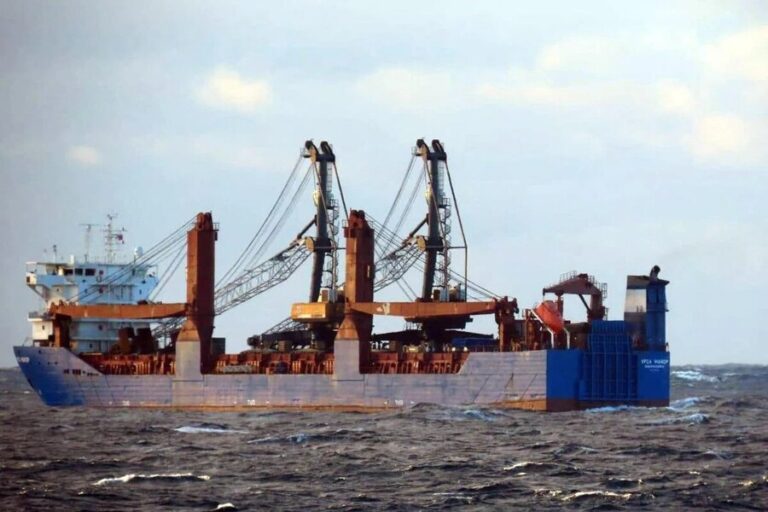A tragic incident unfolded in the Mediterranean Sea on Monday when the Russian cargo ship Ursa Major sank off the coast of Spain, leaving two of its crew members missing. The ship, en route to Russia’s far eastern port city of Vladivostok, sank in the waters between Spain and Algeria after an explosion in the engine room, according to the Russian Foreign Ministry and Spain’s maritime rescue agency. The incident has raised concerns about the safety of cargo ships navigating the increasingly perilous Mediterranean routes.
The Ursa Major was carrying two massive cranes weighing 380 tons each, bound for Russia’s Vladivostok port. The vessel had departed from St. Petersburg over a week ago, on December 9, before encountering the disaster. According to Russian state news agency Ria Novosti, the ship was in transit for over 12 days before the explosion led to its sinking. The Spanish maritime rescue service responded promptly, launching a dramatic rescue operation to save the crew.
The Cause of the Explosion
According to Spanish authorities, the exact cause of the explosion that led to the ship’s sinking is still under investigation. The Ursa Major was carrying empty containers, and the two cranes that were onboard for delivery to Vladivostok were reportedly secured properly. The ship’s engine room explosion appears to have been the catalyst for the disaster, but Spanish authorities have yet to confirm whether the cause was related to mechanical failure, fuel-related issues, or external factors.
Russian officials have stated that they are conducting a full investigation into the incident, with the Russian embassy in Spain maintaining close contact with Spanish authorities throughout the process. The embassy confirmed that they were taking all necessary steps to coordinate with local officials and understand the full scope of the incident.
The Ursa Major was owned by SK-Yug, a subsidiary of the Russian logistics and shipping company Oboronlogistika. The company is known for its ties to Russia’s defense ministry and has been placed under U.S. and European Union sanctions for its involvement with military-related transport. While the ship’s crane and container cargo were seemingly non-military in nature, the ownership of the ship has raised additional questions regarding the role of Russia’s defense interests in commercial shipping.
Crew Rescued, but Two Missing

Authorities confirmed that fourteen crew members of the Ursa Major were rescued uninjured from a lifeboat and safely transferred to Spain. These crew members had managed to escape the sinking ship, which had listed heavily following the explosion. However, two others remain missing, and search efforts continued late into Tuesday, with no further reports on their whereabouts. The crew members rescued from the lifeboat were provided with medical attention and returned safely to Spain, but the fate of their missing colleagues remains uncertain.
The Spanish maritime rescue service received an emergency alert around 1 p.m. local time on Monday, stating that the Ursa Major was 57 nautical miles off the coast of Almería, a coastal city in southeastern Spain. When the rescue teams arrived, they found the vessel in distress, listing heavily and releasing a lifeboat into the water. Poor weather conditions complicated the rescue operations, but a nearby ship responded to the call for help and reported the lifeboat’s location.
Later that day, a Russian warship arrived in the area to assist with the ongoing rescue efforts. Despite their best attempts, the 142-meter-long Ursa Major sank around midnight, leaving the crew stranded at sea. Spanish authorities were quick to initiate further measures, including monitoring the area for potential pollution caused by the shipwreck and removing any debris that could pose a threat to other ships navigating the busy Mediterranean waters.
The Mediterranean Route and Global Shipping Risks
This tragic incident is a stark reminder of the dangers of international shipping routes, especially in the Mediterranean. While the Northern Sea Route, through Russia’s Arctic regions, is becoming increasingly navigable due to climate change, the majority of cargo vessels still opt for the southern route through the Mediterranean, particularly during the winter months. The Ursa Major was following this well-trodden path as it made its way toward the Suez Canal, where it would then proceed toward its final destination in Vladivostok.
It’s not uncommon for Russian cargo ships traveling from St. Petersburg to Vladivostok to pass through the Mediterranean and Suez Canal, as the southern route remains the preferred path for most vessels, particularly during colder months. This is due to the logistical challenges and the risks involved with navigating the Arctic route, which has only recently started to see year-round traffic. However, the Mediterranean route also carries its own set of dangers, including unpredictable weather, technical failures, and the constant threat of maritime accidents.
The Ursa Major was not the only Russian cargo ship in the region. Another vessel, the Sparta, which was also under U.S. sanctions, was reported to be on its way to Port Said, Egypt. The proximity of multiple Russian vessels in the Mediterranean at the same time highlights the critical nature of this maritime corridor for global shipping and trade.
Ongoing Search and Rescue Operations
While the ship’s sinking has been confirmed, authorities remain vigilant in the search for any remaining debris and potential hazards in the waters. Spanish maritime rescue units stayed on high alert through Tuesday, monitoring the Mediterranean for signs of pollution or floating objects that could endanger other vessels navigating the busy trade route.
The investigation into the explosion and sinking of the Ursa Major continues, and while much remains uncertain, it is clear that the incident serves as a reminder of the dangers that ships face in this vital yet hazardous part of the world. With the wreck now submerged, the focus shifts to ensuring the safety of maritime traffic and preventing further disasters.
Global Impact and Future Shipping Concerns
The sinking of the Ursa Major has global implications for maritime safety and shipping regulations, especially concerning the Mediterranean. As international shipping continues to grow and evolve, particularly with the rise of climate change-driven route shifts, incidents like these underscore the need for improved safety measures, better emergency response protocols, and continued international cooperation to ensure that ships can navigate safely and efficiently.
As for the Ursa Major, the loss of life and the vessel itself will likely have ripple effects on Russian shipping companies and their global operations. The fate of the two missing crew members remains the top priority, with hopes that they may still be found as search operations continue in the coming days.
In the meantime, the Mediterranean will remain a focal point for maritime safety efforts as authorities assess the aftermath of this devastating accident and take steps to prevent further loss of life on these high-risk shipping routes.
